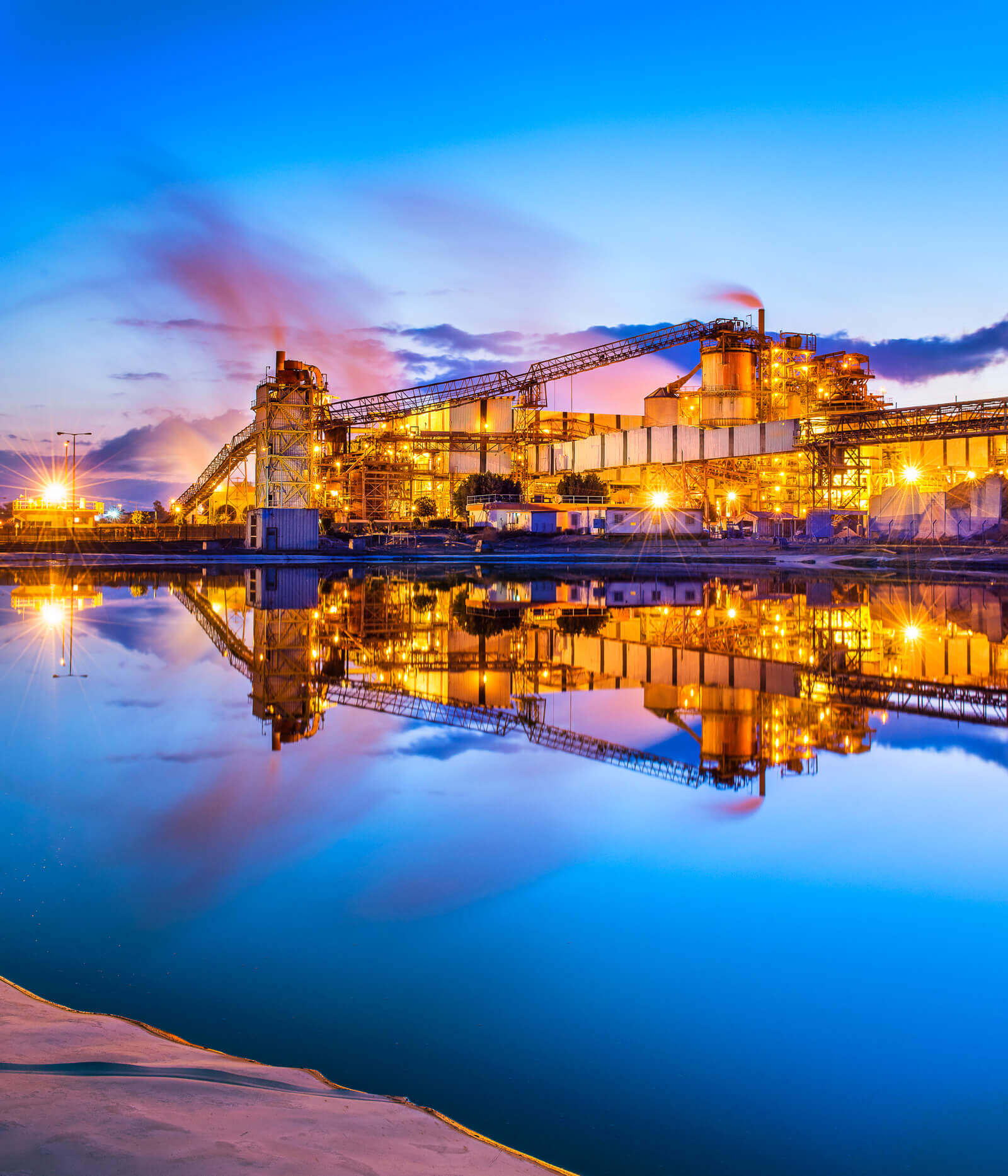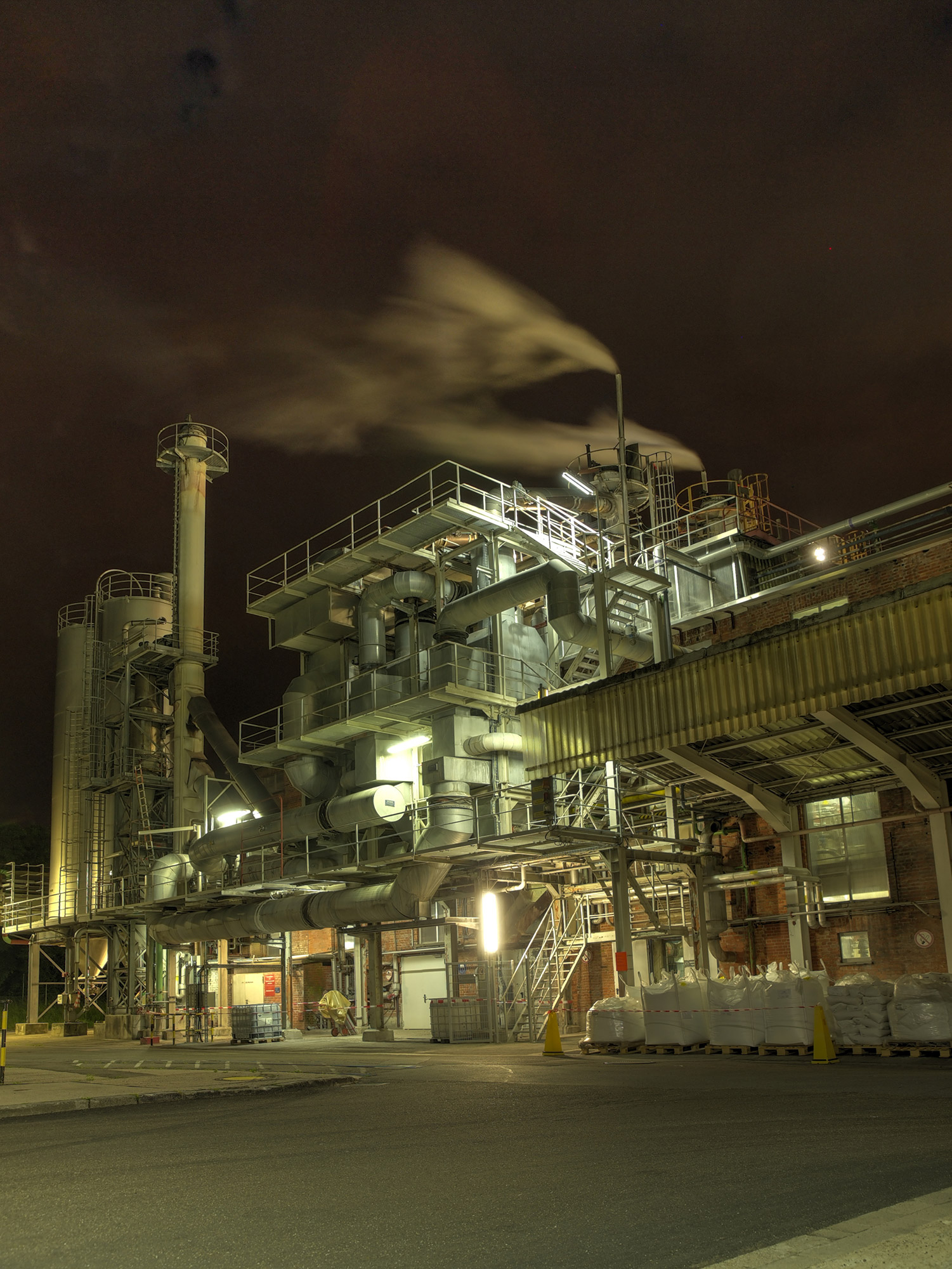Energy
All industrial activity requires energy. Our energy consumption is both direct and indirect. Direct energy is energy produced by fuel combustion, mainly used to operate steam boilers, electricity generators and similar installations at ICL production sites, as well as fuel for vehicles. Indirect energy use is mainly via our purchase of electricity and steam from external suppliers.
There are two types of energy sources: non-renewable energy, which is derived from fossil fuels, and renewable energy sources, such as hydropower, sun and wind. Energy derived from non-renewable fossil fuels contribute to emissions of both health-related air pollutants as well as greenhouse gases. Though ICL uses fossil fuels, such as diesel, fuel oil and oil shales, the company is nearing the completion of a major transition from these heavy fossil fuels to natural gas (a much cleaner fuel).
Note: In the charts below, 2008 appears as the base year used by ICL to measure its long-term performance (in addition to short-term, year by year performance).
ENERGY EFFICIENCY: ICL’s GOAL IS TO ACHIEVE 8 USD MILLION IN ENERGY SAVINGS IN 2019 COMPARED WITH 2018.
Following are the yearly trends in direct and indirect energy consumption. The major trend changes and overall increase in 2018 were caused by the operation of the new Sdom CHP (Combined Heat and Power) plant, a significant operational transition that bring forward significant environmental improvements. See further explanation below. Note that in accordance to the GRI methodology, the 2018 direct energy figure is slightly lower (by 1%) than the sum of the global fuels consumed, since it excludes the 0.335 Million GJ sold as surplus electricity to the Israeli national grid.
Total direct energy consumption by geographical regions
Total indirect energy consumption by geographical region
In August 2018, ICL has made a significant shift to self electricity production, with the full operation of the new, highly efficient and 100% natural-gas based Sdom CHP (combined heat and power) plant. Since then, the new plant is supplying the grand majority of the electricity demand for all ICL’s Israeli sites, and thus replacing most previously externally purchased electricity in ICL Israel. Some surplus electricity from the new plant is also sold by ICL to the Israeli national grid. The plant also supplies the ICL Sdom different facilities with all need steam.
Following the operation of the new Sdom power plant, ICL’s total (direct+indirect) energy consumption in 2018 has increased by 14% compared to 2017. Direct Energy has increased by 23% while Indirect energy has decreased by 14%. The increase in the overall energy figures which combine both fuels and electricity, is an unavoidable consequence of the major transition to self-electricity generation. Despite the fact that ICL sites have consumed very similar amounts of electricity overall- the 2018 figures now include the increased consumed natural gas ‘gross’ amounts, replacing some of the 2017 ‘net’ electricity amounts. Despite the very high efficiency of ICL’s new plant, not all natural gas is converted to the consumed electricity and steam, and the 2018 energy figure now includes these unavoidable conversion losses. In addition, the major ICL project of establishing the new Sdom CHP plant also required a relatively long period of trial-runs for the plant’s proper operation (In 2018: January to July). During these trial-runs, significant amounts of NG were unavoidably consumed even before the plant could provide electricity for the ICL sites. The company’s analysis that approximately 40% of the increase in fuel consumption in 2018 can be attributed to these trial-runs, which will not be needed as of 2019, in the normal full-year operation of the new plant. In a broader perspective, the new power plant allows for a reduction of the overall energy-related environmental impact in the state of Israel, as evident from the significant reduction in NOx emissions.
The previous 18% increase in total energy consumption between the years 2015 to 2016 was impacted by the return to a full production capacity of several of our largest energy consuming sites, following a prolonged worker-strike at these sites in 2015. It was also derived from the addition of ICL China YPH JV, a major, recently acquired operation, to our reporting scope in 2016. A portion of the increase was offset by our extensive energy savings initiatives.
ICL strives to continuously improve energy efficiency and to decrease our emissions by increasing our use of clean and renewable energy.
Total fuel consumption by type
Due to ICL’s major transition to Natural Gas, 90% of the total remote fuel consumption of ICL Global facilities in 2018 was derived of NG (compared to only 26% in 2008, pre-transition). This transition was a major cause in reducing emissions such as NOx, PM and GHG’s. Natural Gas consumption has increased significantly in 2018 due to the sharp increase in its consumption to produce electricity and steam in the new Sdom CHP plant.

Energy per Production
USING RENEWABLE ENERGY
As renewable energy becomes more readily available, countries worldwide have encouraged and developed large-scale use of this clean energy. We are gradually increasing our purchase of renewable-based external electricity and steam in the countries where we operate and where such sources are available.
Most ICL Europe and Brazil production sites are purchasing electricity from suppliers who partially use renewable sources for power generation in their fuel mix. ICL Austria Hartberg is effectively 100% carbon neutral in remote energy usage as it only consumes renewable electricity (mainly from hydro-power) and renewable steam (produced from renewable-certified wood chips). Another ICL Site, ICL Belgium NU3, has converted to purchasing 100% renewable electricity in 2018.
We are also engaged in research and development of bromine batteries intended for renewable energy storage.
Read More







